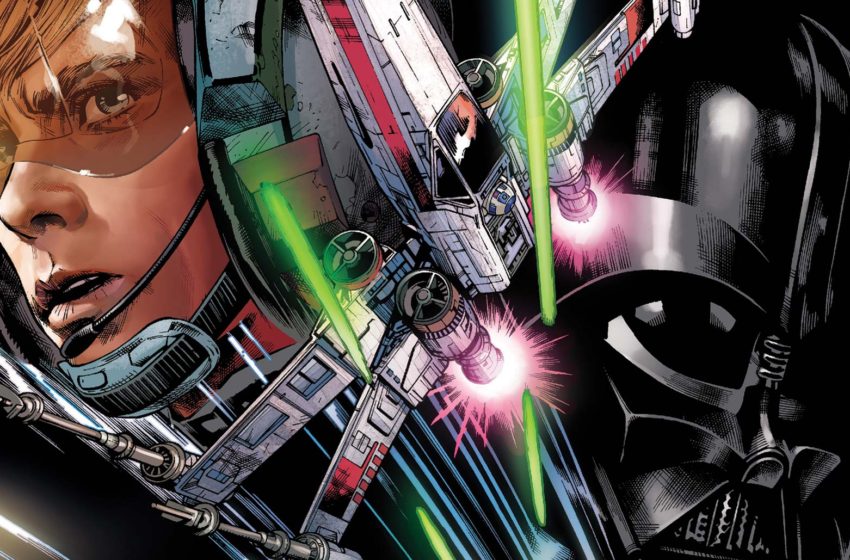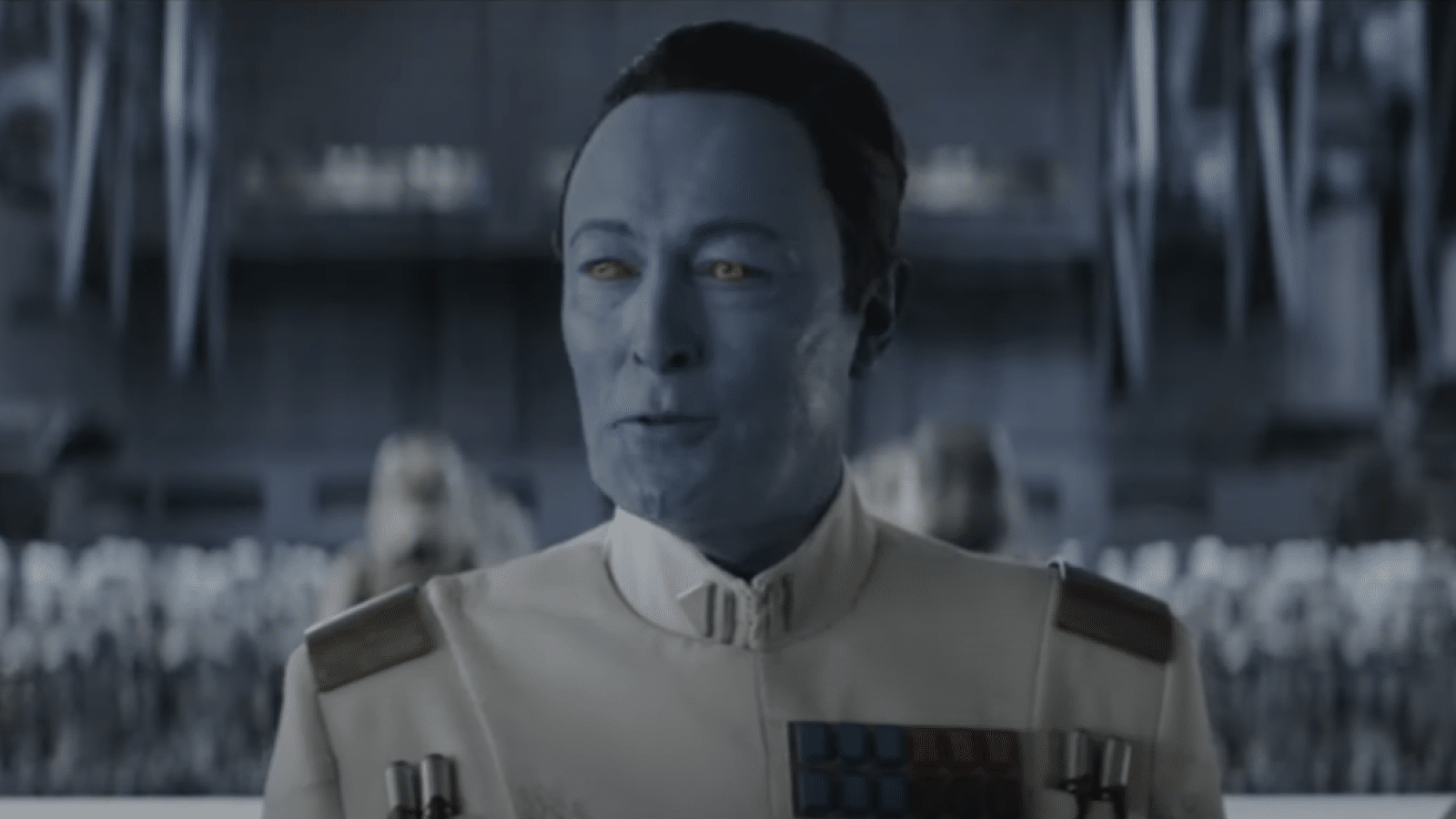Luke continues to run from Darth Vader while Lando issues an apology in Star Wars #17 written by Charles Soule, art by Ramon Rosanas, colored by Rachelle Rosenberg, and lettered by Clayton Cowles.
For much of the last several issues, the trio of Leia, Lando and Chewbacca have been sidelined; after arriving on Jekara in issue #14, most of their “War of the Bounty Hunters” actions have occurred outside the pages of this main series. Instead, the focus has been on Luke, first via a side-quest in issue #15 and then last issue’s more inward-looking examination of Luke’s relationship with Vader. Roughly half this issue continues that trend, featuring the continuation of the Luke/Vader dogfight begun in Darth Vader #16 (including a fun sequence in which Vader basically turns his TIE fighter into the shark from Jaws, which leads to Luke essentially throwing a glacier at Vader), culminating in Luke having the drop on Vader but being unable to finish him off, saying he’s not ready to face him yet. The moment is clearly meant to lend weight to their later confrontation in Return of the Jedi – when Luke is ready to face him, the implicit promise being the series will get him from here to there in the interim – but it’s also one of those annoying moments in genre fiction where the hero could save a lot of future lives but demurs for reasons that aren’t entirely sold within the narrative (as opposed to the actual reason Luke doesn’t blast Vader into smithereens here; Vader is destined to appear in a movie released 38 years ago).
Meanwhile, in the other half of the issue, Charles Soule finally puts Leia/Lando/Chewie back in the spotlight in this book. Specifically, he returns to one of the character arcs the book has been developing since the inception of this volume, that of Lando’s transition from the reluctant betrayer of The Empire Strikes Back to stalwart Rebel general in Return of the Jedi. With the Millennium Falcon disabled just inches (relatively speaking) from the Imperial shuttle carrying Han (which is, in turn, being held in check by Lobot, in a massive flex), Chewie and Lando are desperate to get the Falcon at least capable of moving again with Han so close. Lando, no stranger to the inner workings of the Falcon, devises a plan that involves him risking his life to reboot a key system – a system tied, in part, to the remnants of Elthree, Lando’s droid companion from Solo whose computer brain was, essentially, downloaded into the Falcon after the destruction of her body. This leads to a compelling sequence in which Lando apologizes to Elthree as he begs her to help him get the ship running again, not for himself, but for the people he’s trying to help, people who want to make things in the galaxy better.
While the tension created by the reactor buildup that has to be released in regular short intervals, risking Lando’s life while he works, feels very manufactured (it reads a lot like when Star Trek writers would reportedly just type “insert techno babble here” into their scripts), the source of actual tension in the sequence – will Elthree forgive and help Lando? – is much more palpable, because Lando’s regret is genuine, and because the entire act is framed in the context of his redemption arc. Readers know Lando isn’t going to be burned alive by “reactor buildup”, but they don’t know if he’ll gain the absolution he seeks, or if this turn towards “Rebel General” will be a lasting one. Ramon Rosanas underscores the tension via the art, depicting Lando’s efforts in a sequence of uniformly shaped and sized long panels, each centering Lando in extreme closeup, mimicking the tight physical confines of the space in which he’s working. Over the course of the page, Rosanas zooms in closer and closer on Lando as he opens up more and more to Elthree. At the same time, each panel gets subsequently brighter as the deadly reactor buildup draws closer, adding a visual ticking clock to the sequence. By the time Lando emerges triumphant from his crucible, it’s clear this is a (the?) moment in which Lando decides to start working for something bigger than himself and his immediate companions; tying that decision to his relationship with Elthree and his feelings of regret about her not only binds threads of the character’s history together, it also makes his development richer and more nuanced in the process. The scene ends with Lando quietly uttering “thank you” to Elthree, and it’s clear he’s thanking her as much for sparking his transformation as he is for the change in the ship’s status.
Lest things get too darkly emotional for Lando, Soule punctuates Lando’s moment of transformation in the bowels of the Falcon with a great speech from Leia, in which she frames the Rebellion as being the greatest gamble of all time, the perfect hook for a inveterate gambler like Lando – something Lando appreciatively acknowledges. The one-two punch of his emotional catharsis combined with the play to his vanity and love of gambling may not mark the end of Lando’s journey from scoundrel to general – there’s plenty of opportunities for backslides or further development in the space of however many issues this iteration of the series has left in it – but it is a great example of how the creative team is capable of keeping the series’ character arcs centered even amidst all the sturm und drang of the crossover, using the twisty plot beats and high octane action sequences to push its heroes forward.
Austin Gorton also reviews older issues of X-Men at the Real Gentlemen of Leisure website, co-hosts the A Very Special episode podcast, and likes Star Wars. He lives outside Minneapolis, where sometimes, it is not cold. Follow him on Twitter @AustinGorton






